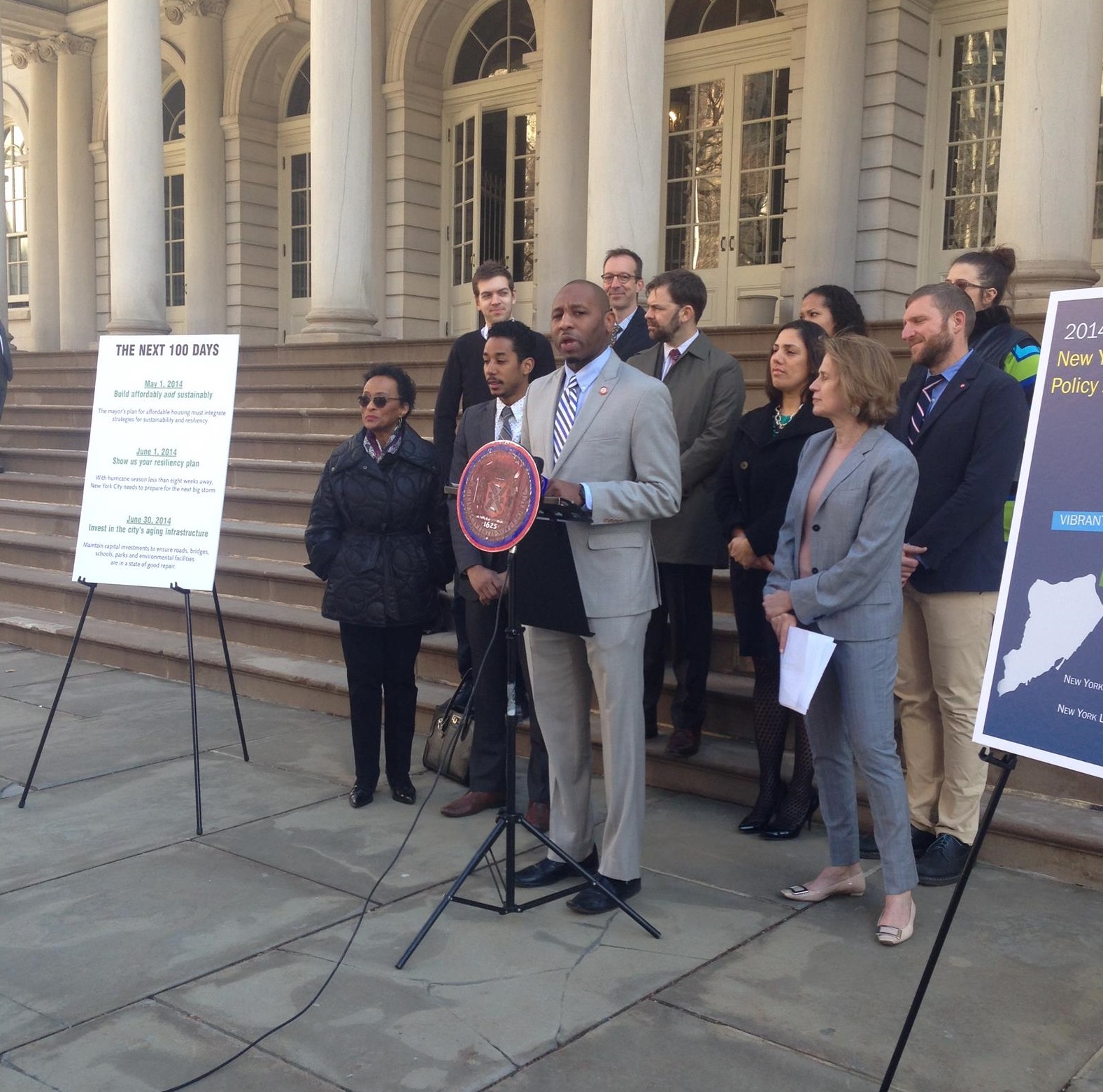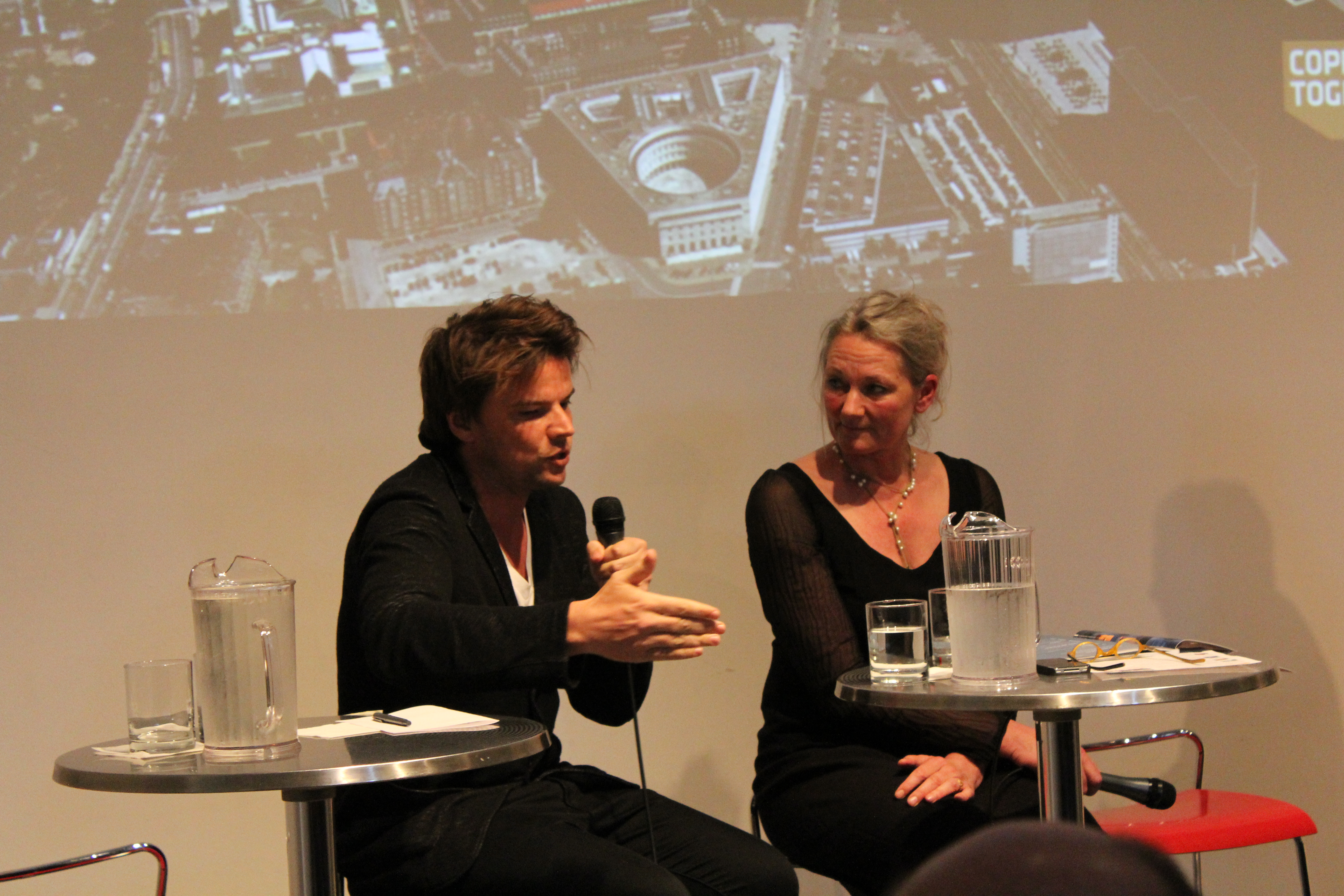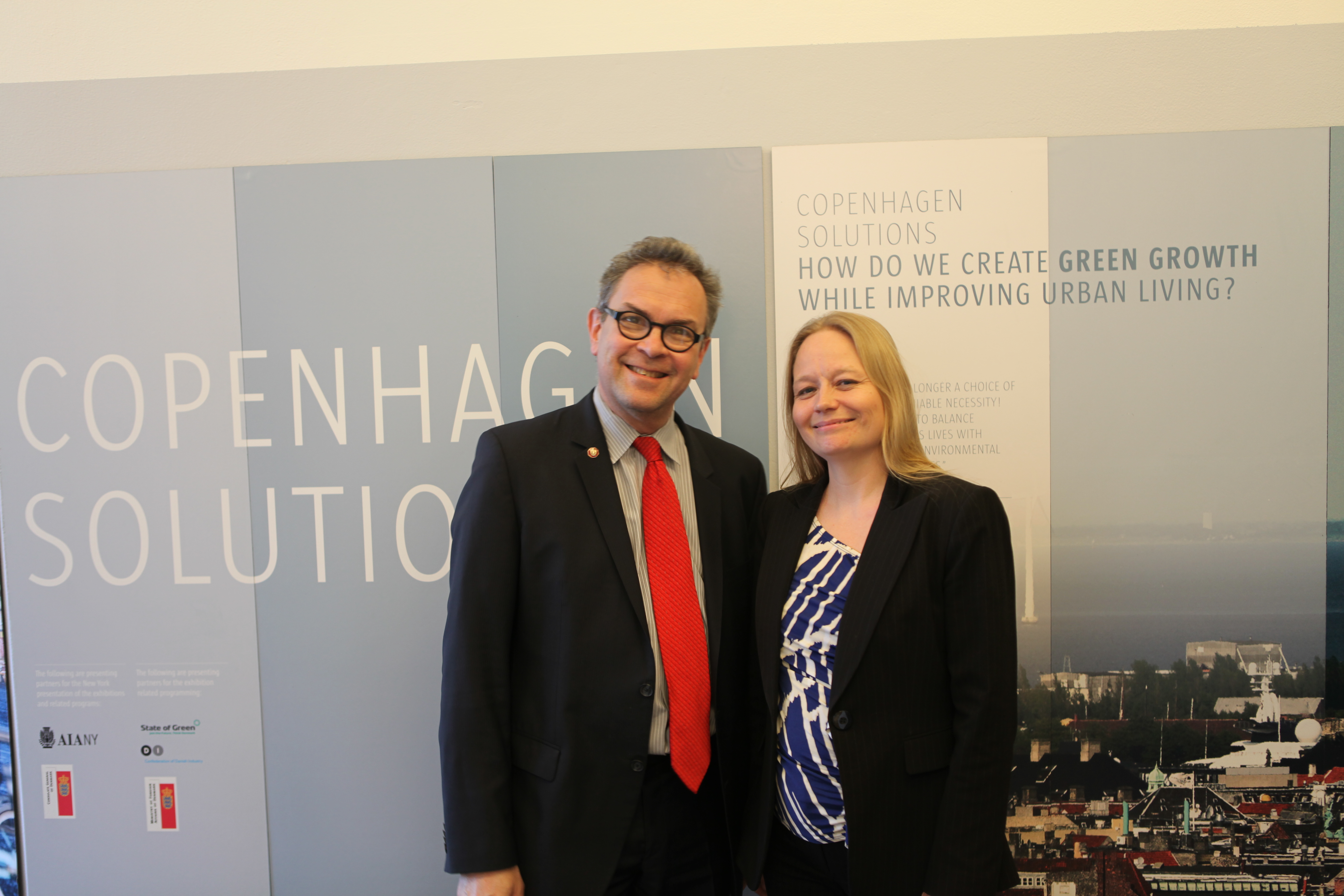On Thursday, 04.10.14, the New York League of Conservation Voters (NYLCV) held a demonstration on the steps of City Hall calling on Mayor Bill de Blasio, on his 100th day in office, to focus on sustainability and resiliency efforts in his next 100 days. The press conference announced three suggested steps that, if implemented, will better prepare New York City for future climate change and weather-related events. NYLCV President Marcia Bystryn gave the opening remarks and outlined the three milestones that emphasize long-term planning in a post-Sandy New York City:
- The de Blasio Administration has set 05.01.14 as the deadline to announce its plan to add and preserve 200,000 affordable housing units. These units should be built sustainably and resiliently. They should also include access to transit and parks.
- The official start of the next hurricane season is 06.01.14. The mayor should initiate a comprehensive plan to ensure that New York is prepared for the next storm and the changing climate.
- The deadline for a finalized city budget is 06.30.14. Sustainability and resiliency planning must be included in the capital plan, in addition to vital infrastructure repairs. Continue reading “A Sustainable and Resilient Plan for de Blasio’s Next 100 Days + Iowa Passes Good Samaritan Bill”


